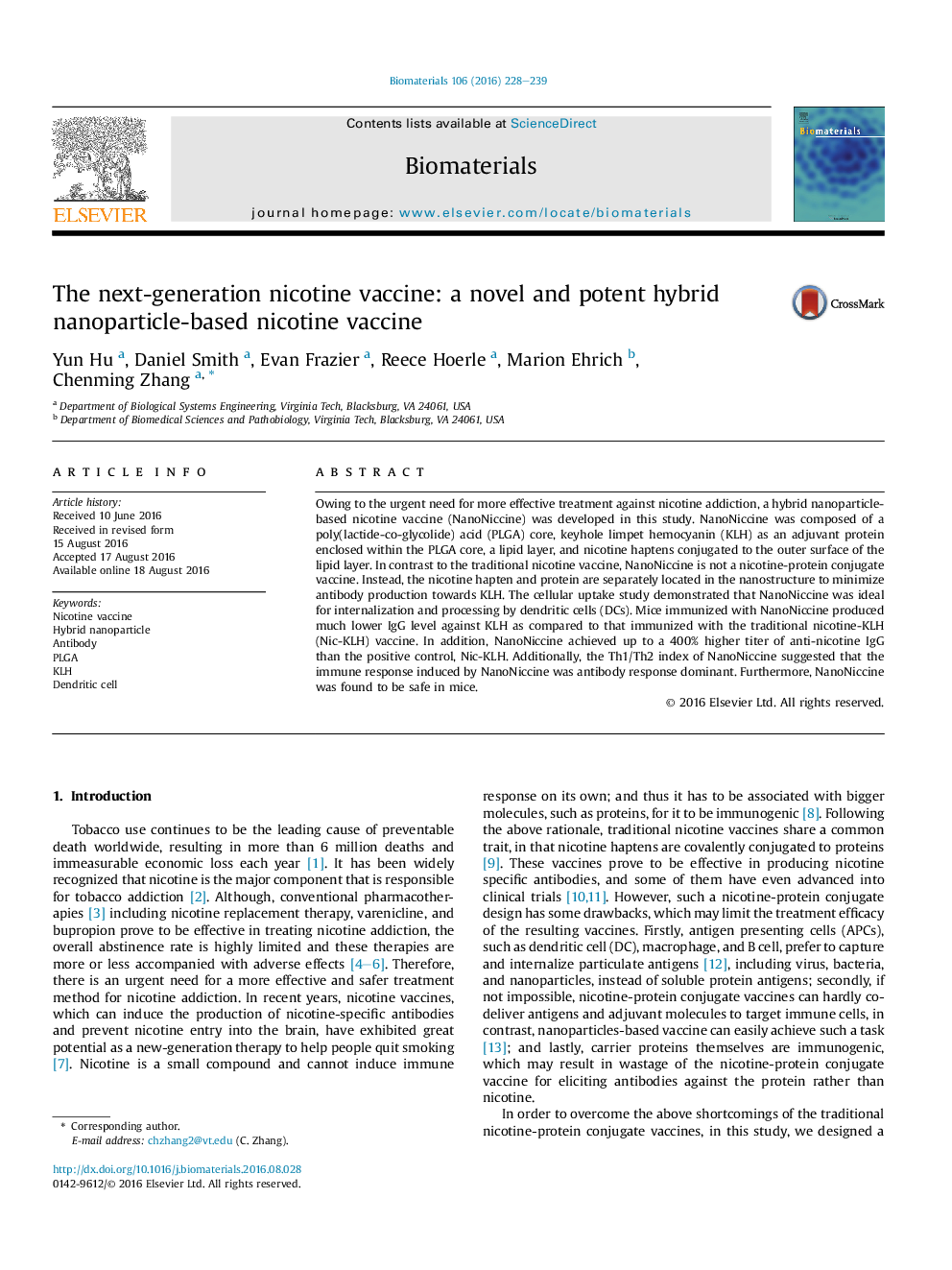| Article ID | Journal | Published Year | Pages | File Type |
|---|---|---|---|---|
| 6451100 | Biomaterials | 2016 | 12 Pages |
Owing to the urgent need for more effective treatment against nicotine addiction, a hybrid nanoparticle-based nicotine vaccine (NanoNiccine) was developed in this study. NanoNiccine was composed of a poly(lactide-co-glycolide) acid (PLGA) core, keyhole limpet hemocyanin (KLH) as an adjuvant protein enclosed within the PLGA core, a lipid layer, and nicotine haptens conjugated to the outer surface of the lipid layer. In contrast to the traditional nicotine vaccine, NanoNiccine is not a nicotine-protein conjugate vaccine. Instead, the nicotine hapten and protein are separately located in the nanostructure to minimize antibody production towards KLH. The cellular uptake study demonstrated that NanoNiccine was ideal for internalization and processing by dendritic cells (DCs). Mice immunized with NanoNiccine produced much lower IgG level against KLH as compared to that immunized with the traditional nicotine-KLH (Nic-KLH) vaccine. In addition, NanoNiccine achieved up to a 400% higher titer of anti-nicotine IgG than the positive control, Nic-KLH. Additionally, the Th1/Th2 index of NanoNiccine suggested that the immune response induced by NanoNiccine was antibody response dominant. Furthermore, NanoNiccine was found to be safe in mice.
